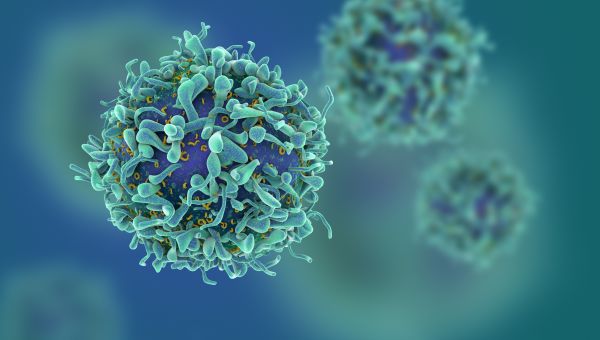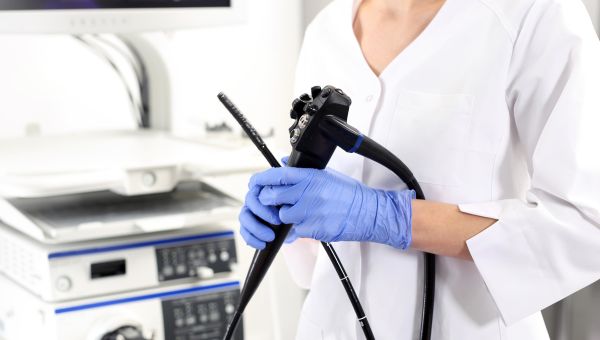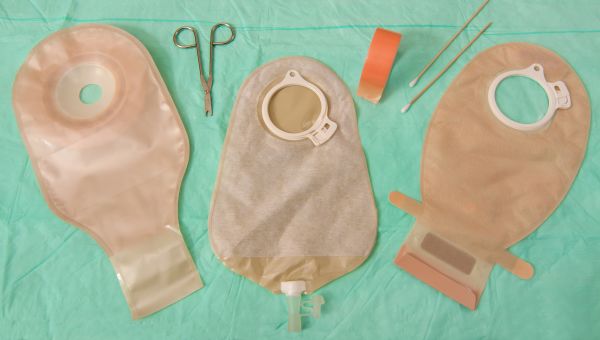11 Things Your Doctor Wants You to Know About Colorectal Cancer
An expert weighs in on the important stuff—screenings, diagnosis, treatment and more.

A colorectal cancer diagnosis can be frightening, but the best cure for fear is knowledge. We asked surgical oncologist Jill Onesti, MD, of Mercy Health Saint Mary’s in Grand Rapids, Michigan, to shine a light on colorectal cancer, from screening and diagnosis to treatment and recovery.

Colorectal cancer is fairly common
Colon cancer and rectal cancer are often grouped together under the umbrella term of colorectal cancer because they share many features. Colorectal cancer is the second leading cause of cancer deaths in the United States, according to the U.S. National Cancer Institute. It's also the fourth most common cancer, behind breast cancer, lung cancer and prostate cancer, affecting roughly 1.4 million Americans.

Symptoms can be hard to spot
Colorectal cancer symptoms are subtle and are shared by many other conditions, such as irritable bowel syndrome, diverticulitis, ulcerative colitis, Crohn’s disease and even hemorrhoids.
Symptoms include:
- Change in bowel habits, including constipation, diarrhea or narrowing of the stool
- Rectal bleeding
- Dark stools or blood in stool
- Cramping or abdominal pain
- Weakness or fatigue
- Weight loss
However, early stage colon and rectal cancers often have no symptoms. Once symptoms show up, the cancer is probably at a more advanced stage, and therefore harder to treat.

Risks are a mix of lifestyle and genetics
There are a number of factors that can increase your risk of colorectal cancer. Some you can control, some you can’t. To reduce your risks, avoid:
- A high fat, low fiber diet with lots of red and processed meat
- A sedentary lifestyle
- Smoking
- Obesity
- Drinking alcohol
Risk factors that you can’t control include age (your risk jumps up after age 50), a family history of colorectal cancer or colon polyps and a prior history of colorectal cancer and colon polyps. Polyps are masses that grow on the lining of the colon or rectum. Most are harmless, but some can become cancerous. Most colorectal cancers get their start from polyps.

Survival rates can be high
The earlier a cancer is caught, the better your chances of successful treatment. At stage I colon cancer, where the cancer has not spread beyond the colon wall, the five-year survival rate is 92 percent. The survival rate remains fairly high in stages II and III, but drops off sharply in stage IV, when the cancer has spread to other parts of the body. The five-year survival rate for stage IV is just 11 percent. Survival rates for rectal cancer are similar.

Screening is important
Current screening guidelines from the American Cancer Society (ACS) recommend colonoscopies every 10 years for people of average risk. Even though colorectal cancer is slow growing, screening can help find cancers when they’re in their early stages and more easily treated. However, only a little more than half the people who should get screened for colorectal cancer do so. People at average risk should start screening at age 45, according to the ACS, and people with increased risk typically should be screened earlier and more often. “We certainly try to promote surveillance and encourage people to get screened, but for a variety of reasons people don’t get their colonoscopies, so we still see plenty of people diagnosed at an advanced stage,” says Onesti.

There are multiple screening options
Colorectal cancer screening is not limited to a colonoscopy every 10 years. Other screening tests your doctor may recommend, which you may need more often than a colonoscopy, include:
- Flexible sigmoidoscopy: similar to a colonoscopy, but only examines the rectum and lower colon.
- CT colonography: Also known as a virtual colonoscopy, this imaging test forms three dimensional pictures of your colon.
- Barium enema: This test uses X-rays and a contrast solution to look for colon and rectum abnormalities.
- Fecal immunochemical test: This test involves taking a stool sample at home and sending it to a lab for analysis. The fecal immunochemical test checks for hidden blood in the lower colon and rectum.
- Stool DNA test: Another test that requires you to send a stool sample to a lab; it looks for gene changes that often indicate colon cancer.

Surgery is a mainstay of treatment
With colorectal cancer, surgery is performed to remove it at almost every stage, says Onesti. Stage 0 or I cancers can typically be removed during a colonoscopy. Later stage cancers usually require what’s known as a resection or colectomy. This surgery involves cutting out the cancerous section of the colon and reattaching the two ends. Surgeons try to take out all of the affected colon, as well as the lymph nodes in the area, if necessary. “Most stage I and II cancers can be treated with surgery alone,” says Onesti. Once the cancer has spread to the lymph nodes, Onesti recommends chemotherapy following surgery. “Most colon cancers are not treated with radiation, but rectal cancer is usually treated with chemo and radiation at the same time.”

You might have some work to do before surgery
Onesti says that strides have been made in pre-surgery preparation to make the surgery itself go more smoothly. “We have a lot more information about what patients can do ahead of their surgery,” she says. “The most important? Quit smoking.” Smoking raises your risk of complications like infections, pneumonia, blood clots and kidney problems. “You can also get started on a good nutritional program with enough protein and good, healthy food,” she says.

You’re usually in and out of surgery quickly
Most colorectal surgeries are minimally invasive, meaning the incisions the surgeon makes in the abdomen to get to your intestines are small. An open surgery is done in specific cases, says Onesti, such as if a person might have trouble being under anesthesia for a long time, or if the cancer is growing somewhere the surgeon can’t reach with minimally invasive surgery. While open surgery is quicker, according to Onesti, it means a longer hospital stay. “The vast majority of colon cancer surgeries are minimally invasive,” Onesti says.

You can usually keep your insides on the inside
One of the most frightening prospects of colon surgery is that you’ll need a colostomy bag for your waste to drain in for the rest of your life. According to Onesti, that fear is largely unfounded. “Most of the time, you won’t need a bag,” she says.
Surgeons attach the two ends of the colon to each other after a portion is removed from the middle, says Onesti, instead of attaching them to an external bag. “There are some situations, particularly with rectal cancer, where you might need a permanent bag,” explains Onesti. “But usually there’s no bag or a temporary one.”

It’s possible to recover quickly
It’s common to be out of the hospital in three to five days after surgery. A healthy lifestyle before surgery means you’ll recover faster afterwards. “When people go home, they can resume their normal activities. They’re often tired, but that goes away in few weeks,” she says. You’ll need to avoid lifting anything heavy for about a month, and you may be out of work for two to six weeks.
Your healthcare provider will likely want to see you every few months for four or five years, and possibly more often for certain types of rectal cancer surgery. Within a year you’ll also need a colonoscopy to check for any polyps or tumors missed the first time around.
“In the past few years there’s been more focus on what healthcare providers and patients can do ahead of the surgery to minimize complications,” Onesti says. “All of our instructions for pre-surgery bowel preparation help surgery go more smoothly and get complications as close to zero as possible.”
More On


video

article

slideshow


video


video
